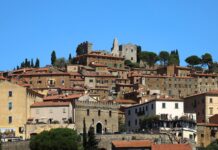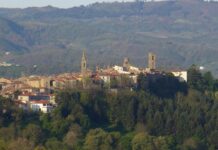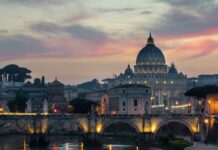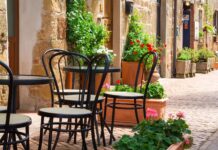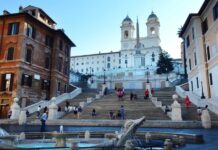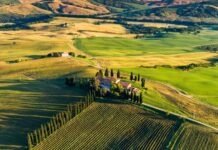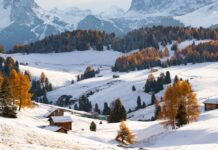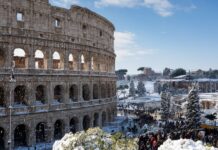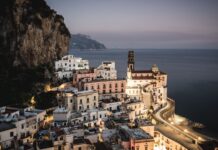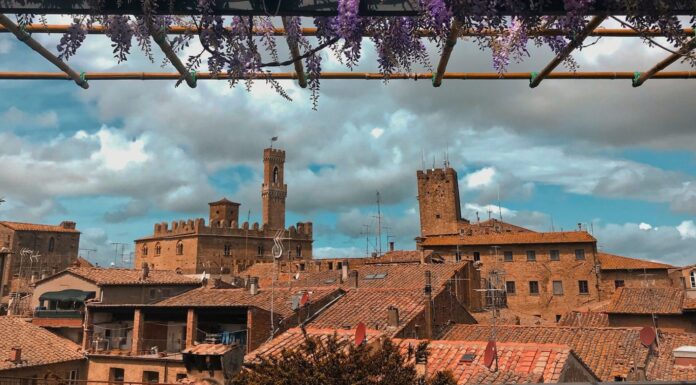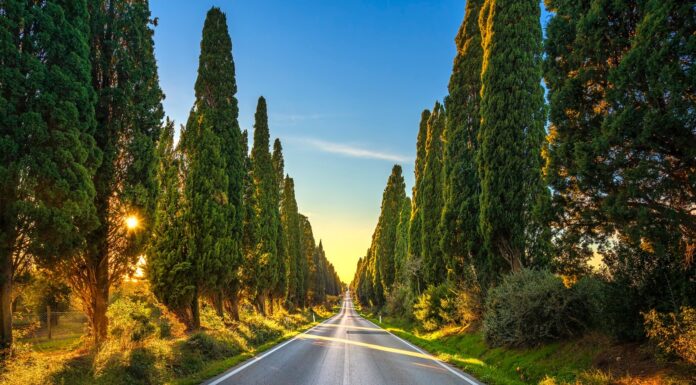What’s behind the beauty of the monuments in Rome? It might be the dreamy location or the timeless architectural structure coming from the meticulousness of the Roman artists. Admiring these beauties is a once in a lifetime experience for those who are looking for culture, tradition and history.
Set in every corner of the so-called Eternal City (from the Italian “La città eterna”), the monuments in Rome represent the foundations on which the contemporary metropolis was built by its people for more than 3 millennia. From the Augustan Age to the 19th century, you can make a wish at the Trevi Fountain, observe the charm of the Sistine Chapel ceiling or wander through the Roman Forum among vibrant markets, fascinating Roman columns and welcoming crowds. A series of masterpieces which will definitely make your visit worth it.
Continue reading the article to discover more about monuments in Rome, their origins and smart travel hacks.
Must-See Monuments in Rome
Here’s the spots you definitely can’t miss for an unforgettable Rome tour.
1. Colosseum
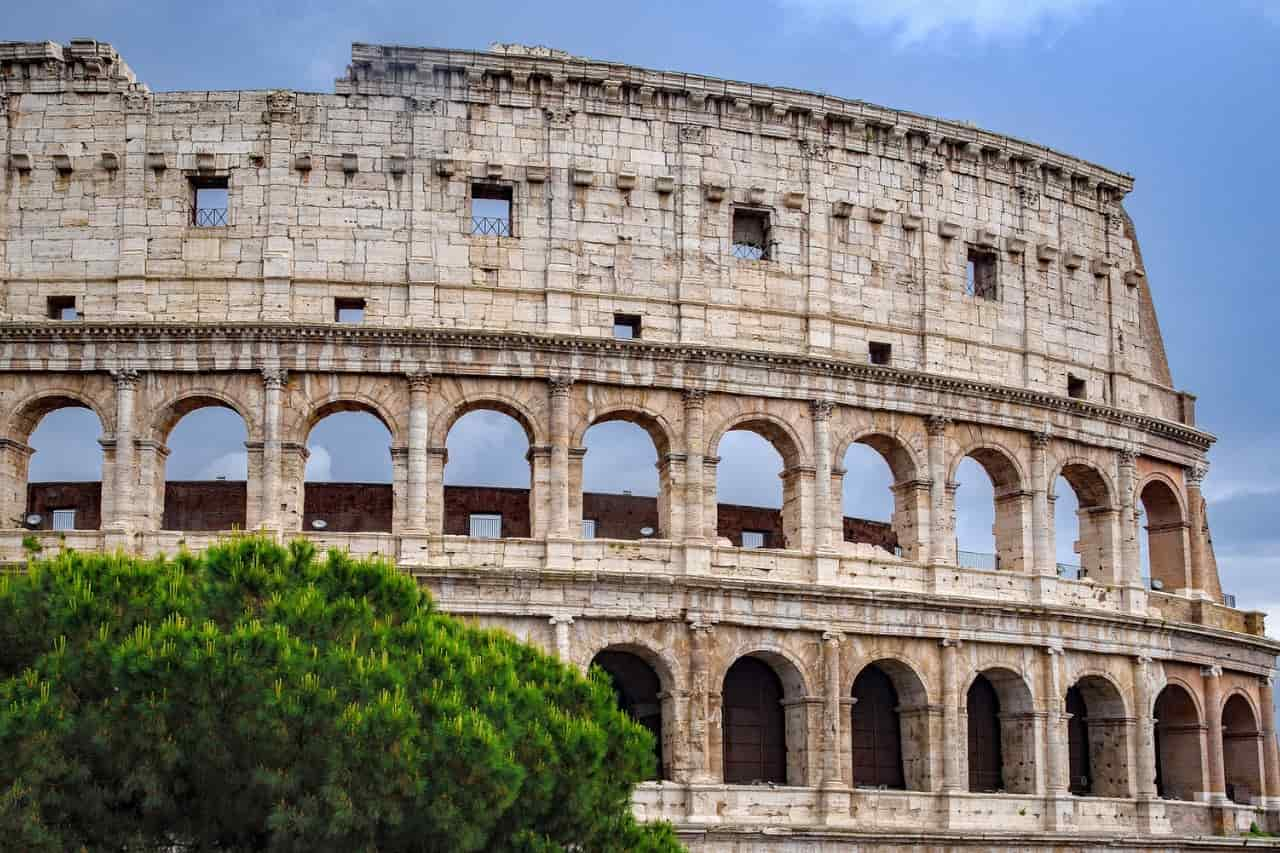
The Flavian Amphitheatre, commonly known as “The Colosseum ”, is the monument in Rome per excellence whose construction was desired by the Emperor Vespasian. The complex, built between the 72 and 82 A.C, hosted more than 50.000 spectators to watch public shows, from gladiator fights to executions up to 523 A.C. Included in the 7 Wonders list, the Colosseum (made of bricks and travertine) has a circular shape and 5 levels rich in Corinthian details. The standard ticket costs 16$ circa.
Travel secret: According to legends, the Colosseum gets its nickname from a huge bronze statue of Nero, which was once set right beside it.
2. Pantheon
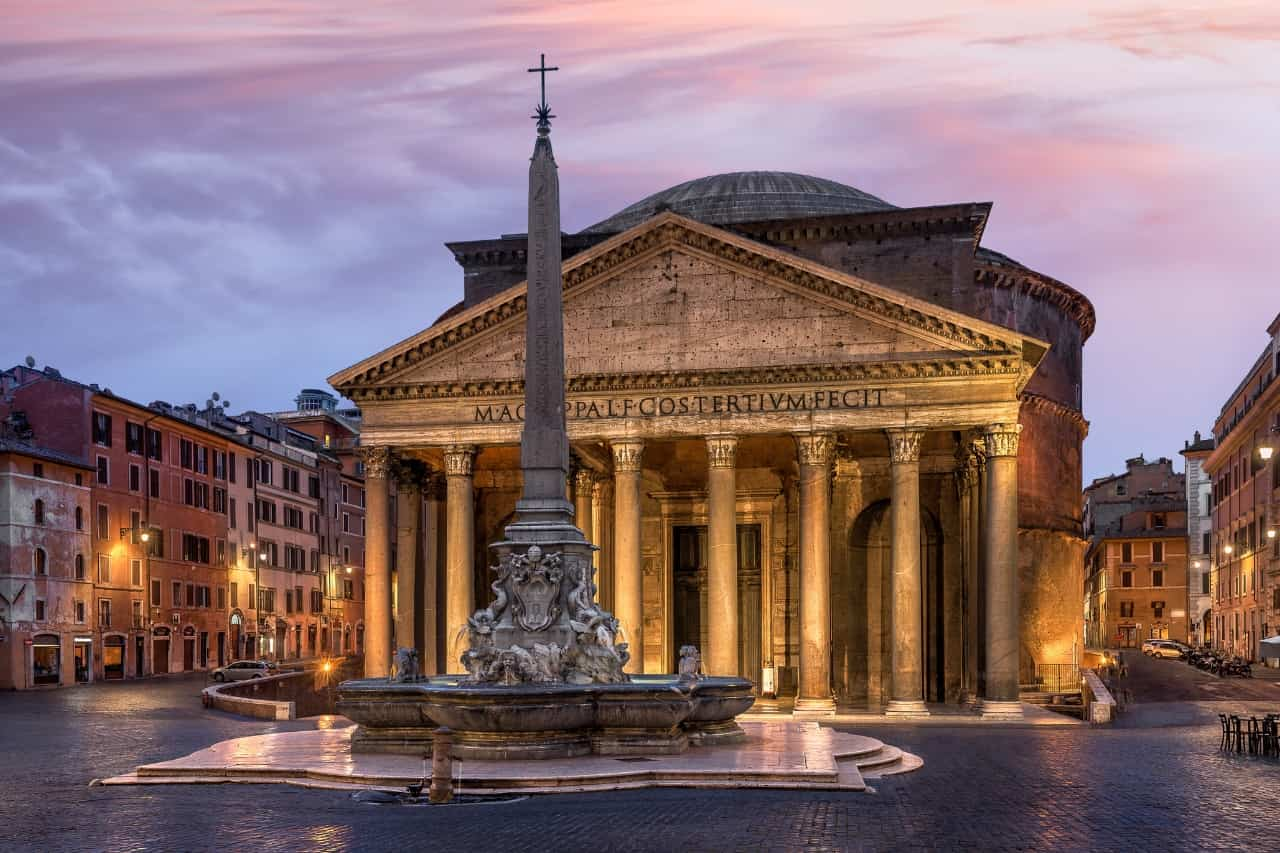
Based in Piazza della Rotonda, the Pantheon (built during the 27-25 B.C.) is one of the best preserved monuments in Rome. Once a temple dedicated to all the gods and actual catholic church (Basilica of St.Mary and the Martyrs), it is globally appreciated for its bronze door but also for the masterly dome equipped with a hole (named ‘oculus’), which was used to study astronomical phenomena. Upon your arrival, it’s also impossible not to notice the painting depicting the Annunciation by M. da Forlì.
Travel secret: The Pantheon is also the burial place of many famous historical personalities such as Raffaello Sanzio (artist). Since January 1878, the site has been chosen to host the corpses of Margherita di Savoia (Queen), Vittorio Emanuele II and Umberto I (the first two Kings of Italy).
3. Roman Forum
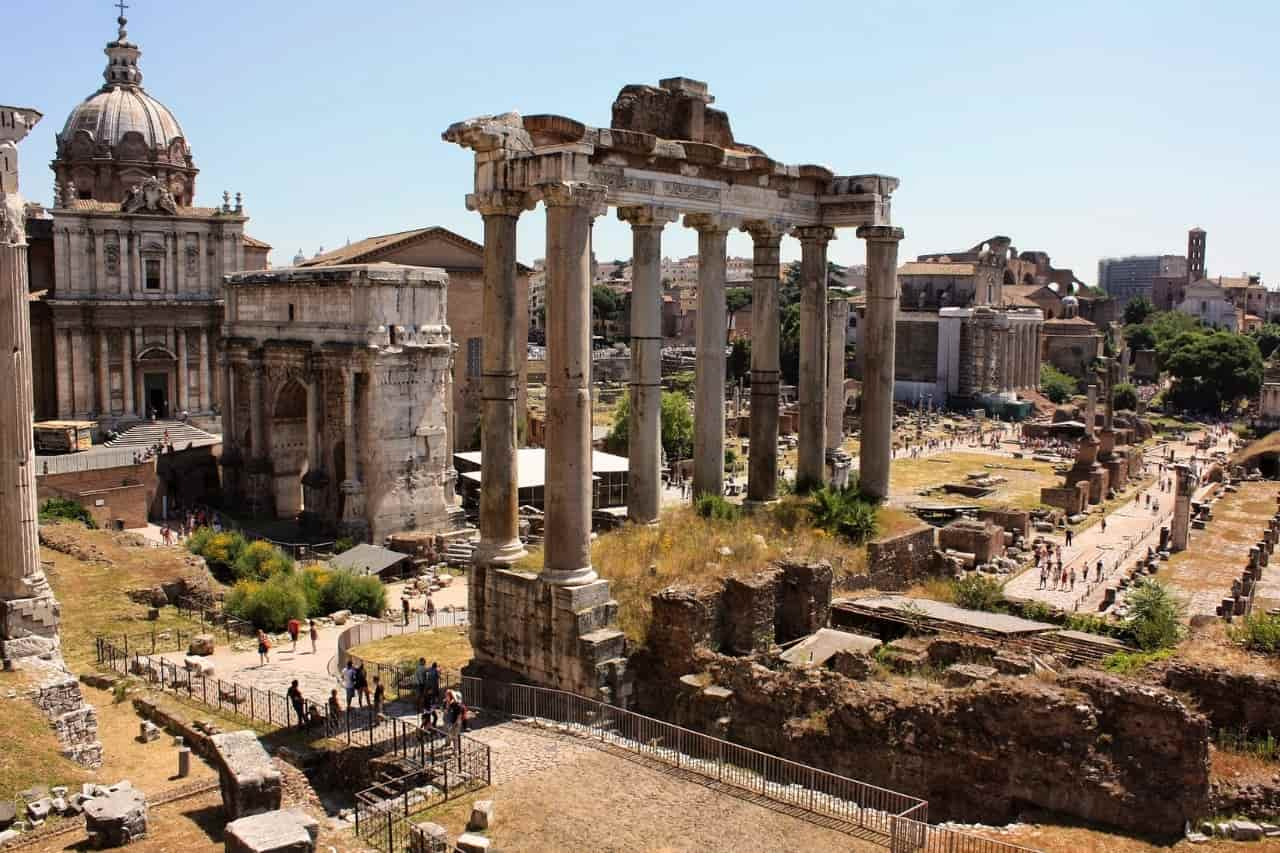
The Roman Forum, among the monuments in Rome, is a strongly renowned open-air archaeological area. The latter, formerly a marshy zone, underwent a remediation (during the 7th century B.C.) which gave it the actual aspect. By now, indeed, the Roman Forum is enclosed between the Palatine, the Colosseum and the Capitoline Hill where was anciently set the commercial heart of the capital. Once there, you can’t miss the Temple of Vespasian and Titus, the Arch of Septimius Severus (on the western side of the site) or the Church of S. Cosma and Damiano.
Travel secret: If you are looking for the best view of the Roman Forum, go straight to Palazzo Senatorio where there’s a terrace overlooking the ruins.
4. Trevi Fountain
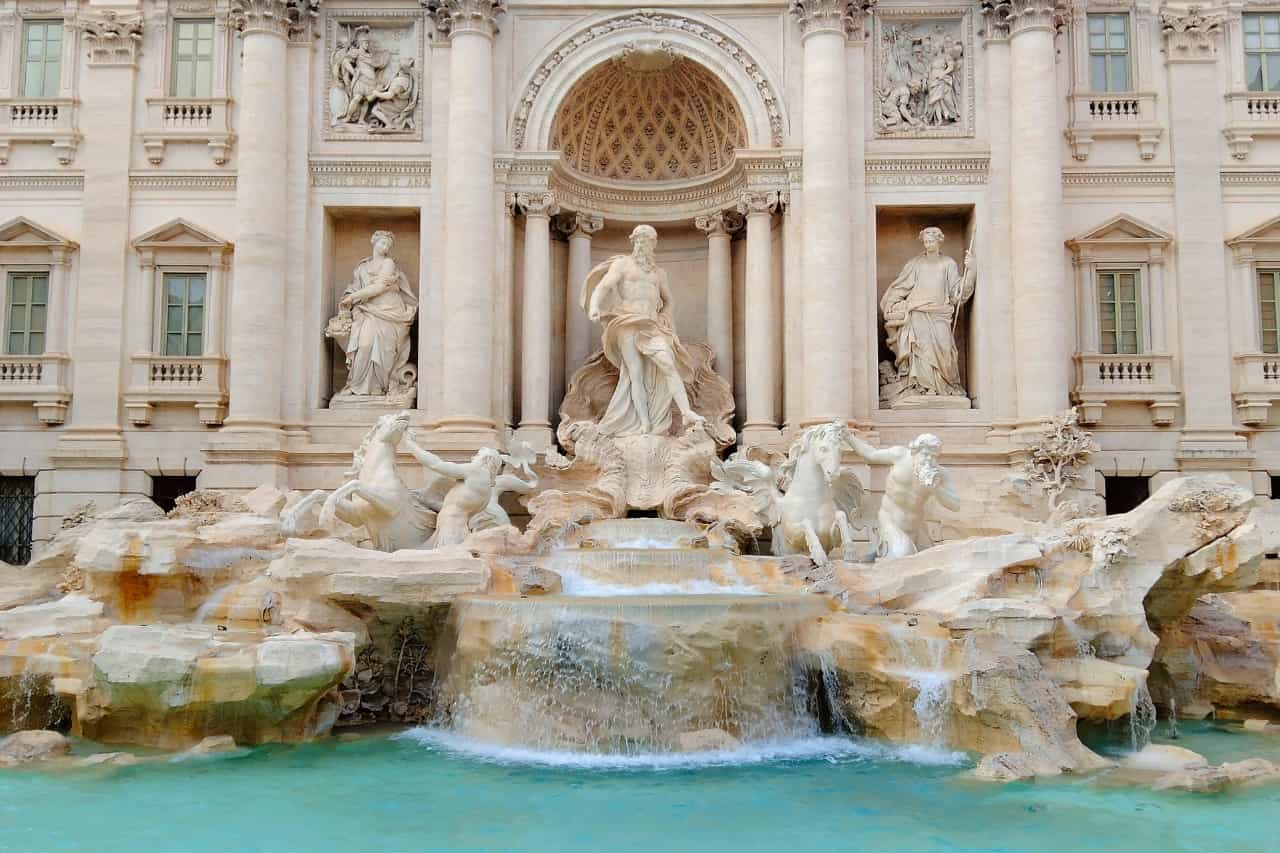
Located in Piazza delle Muratte, the Trevi Fountain is among the most scenic monuments in Rome. This work of art (26 meters high) blends water and architecture with three statues depicting: Oceano (on top of a shell-shaped chariot pulled by hippocampi), Abundance and Healthiness. Beyond these water sources, admire the scenes of Agrippina ordering the construction of the aqueduct and of a girl showing Roman soldiers where to drink. A masterpiece completed in 1762, which was also the main character of movies like: “Eat, Pray, Love” and “Roman Holidays”.
Travel secret: We suggest you visit the Trevi Fountain in the early morning as it is not too crowded and perfect to take the best Instagram pictures.
5. Vatican Museum

The Vatican Museums, in the center of Vatican City, were opened to the public in 1771 to show Egyptian, Hellenic and Roman art collections. We advise you visit at the Sistine Chapel, the Pio Clementino Museum and the 4 Raphael Rooms, full of frescoes made by the homonym artist (during the 16th century) as a tribute to the greatest personalities of the time, works of art depicting pontifical stories and the “Liberation of St. Peter”. Continue your tour with the Pinacoteca (inaugurated in 1932), which hosts more than 460 paintings chronologically arranged (from the 13th to the 19th century) made by Giotto, Caravaggio, Tiziano.
Travel secret: Don’t forget to wear comfortable sneakers, since you’ll have to do lots of walking and stop at the timeless Vatican Gardens and the Gallery of Maps.
6. Sistine Chapel
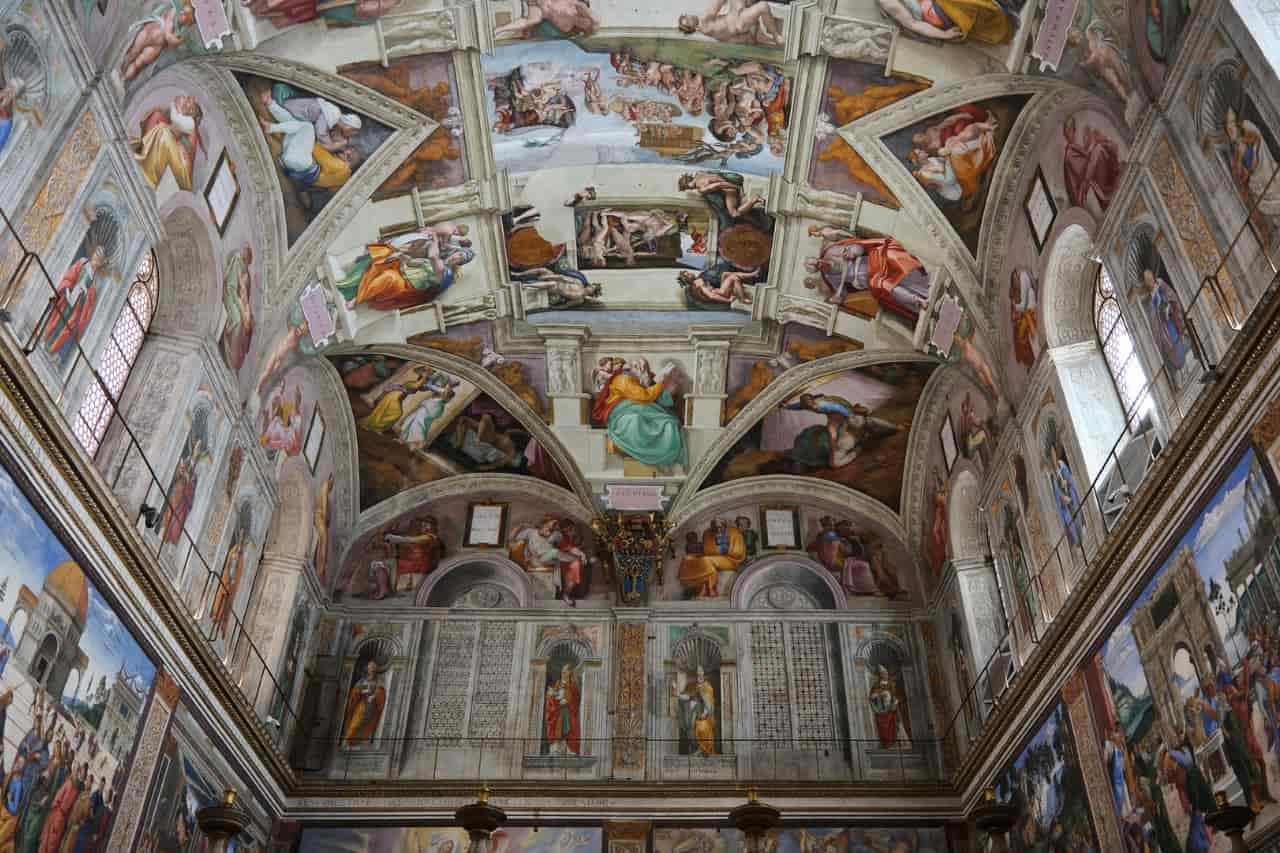
The Sistine Chapel was desired by Pope Sixtus IV della Rovere in 1483. Among the most impressive monuments in Rome, the latter counts multiple masterpieces painted by Botticelli, Ghirlandiaio and Pinturicchio. However, once there, you’ll be astonished by the beauty of Michelangelo frescoes such as: the “Great Genesis” and the “Old Testament” (with 9 episodes depicted) and the powerful “Last Judgment” (from the 16th century), which represents the Kingdom of God with Christ as the protagonist alongside the Virgin Mary and the angels.
Travel secret: You can safely store your luggage at the entrance by paying a small fee, in order to visit the site more comfortably.
7. Saint Peter’s Basilica
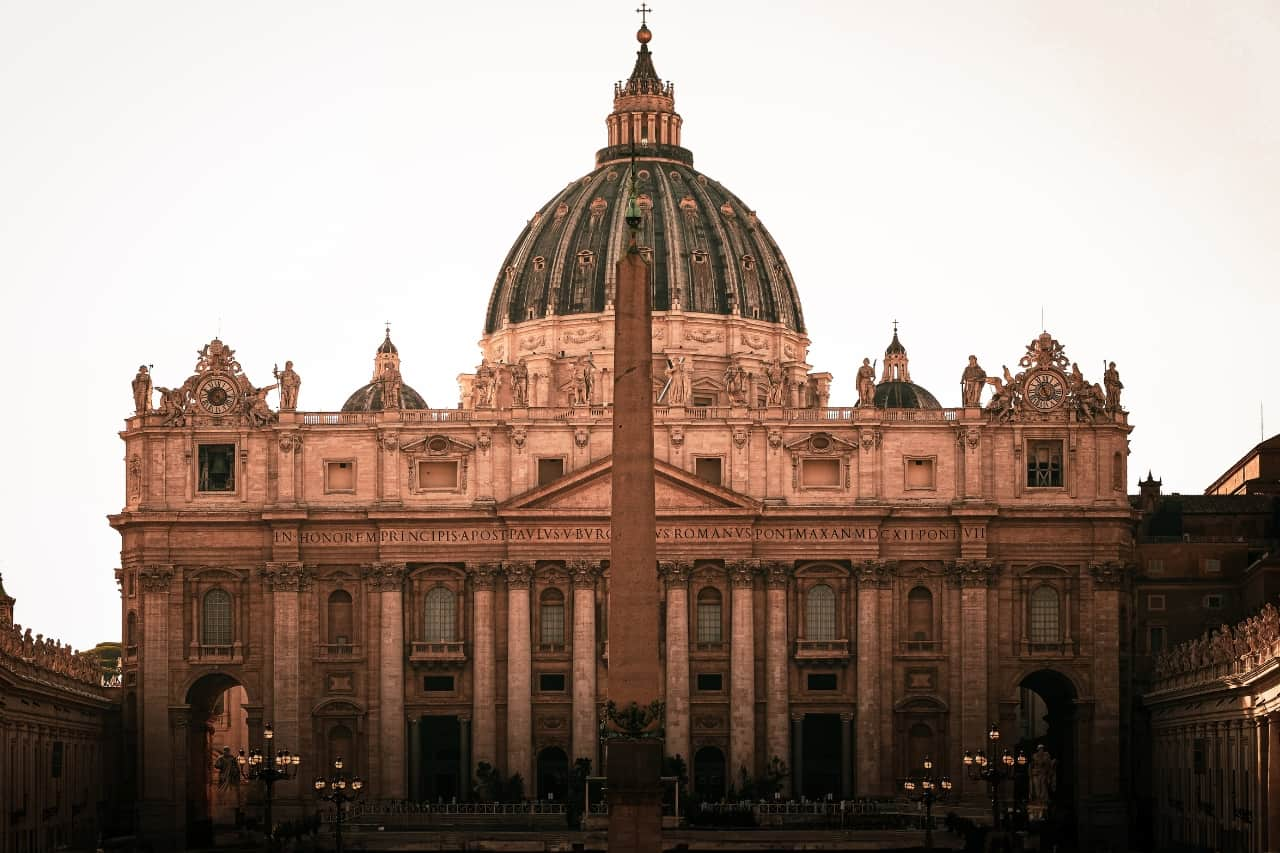
Fulcrum of the Catholic religion, the Saint Peter’s Basilica was built in 1626. The monument, more than 137 meters high, is in Baroque style. Internally made of marble, it hosts the Baldacchino (St. Peter’s burial place), the “Pity” by Michelangelo (representing the dying body of Jesus next to the Virgin Mary after the Crucifixion) and the Vatican Grottoes, which allow you to walk along the 4th century previous Constantinian Basilica.
Travel secret: You can get the best Rome view by reaching the top of the dome (more than 200 steps).
8. Altar of the Fatherland
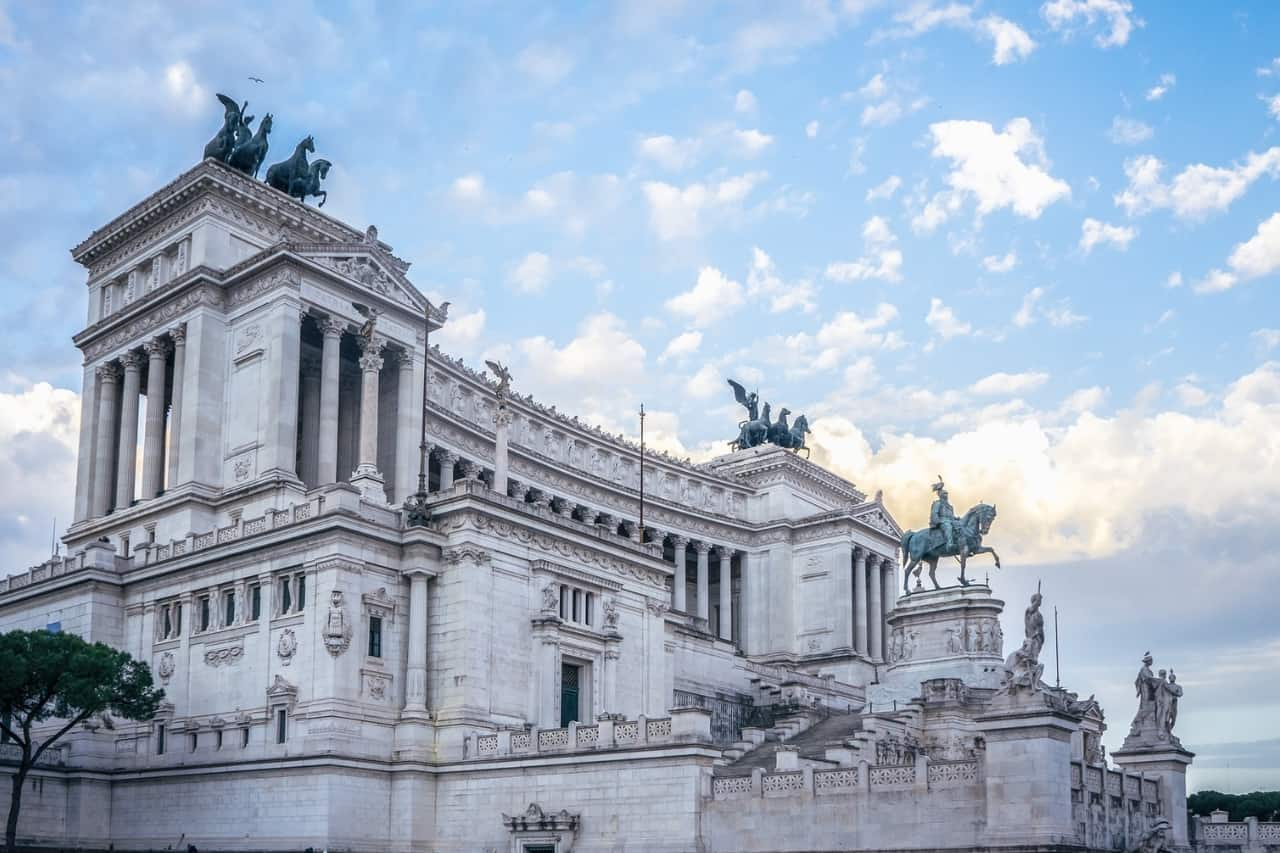
Based in Piazza Venezia, the Altar of the Fatherland is part of the notorious Vittoriano. Built in 1906, this part of the area hosts (since 1921) the Tomb of the Unknown Soldier dedicated to young Italians who died during wars. Once there, admire the two bas-reliefs: the first (on the left) representing Patriotism and the second (on the right) of the Work that builds the country. Dulcis in fundo, an inscription engraving a phrase about the courage of militaries who defend their motherland.
Travel secret: The Altar of the Fatherland is entirely made of a particular stone coming from Brescia, Lombardy.
9. Castel Sant’Angelo
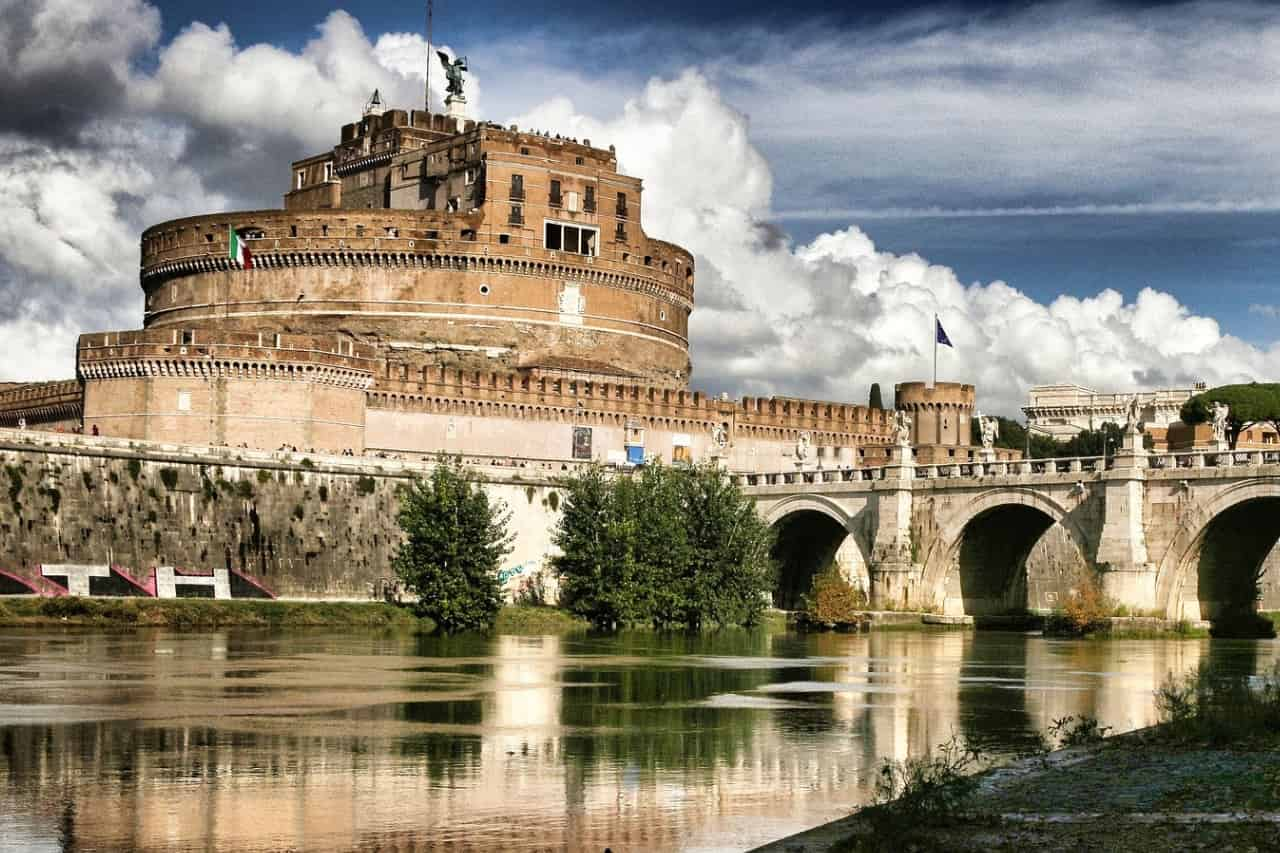
Castel Sant’Angelo, main character of Lungotevere, was built during the 35 A.C. under Emperor Adrian’s order. The monument, once used as a defensive structure and prison, stands out for its bronze statue of S. Michael the Archangel. Before leaving, don’t miss Paolo III Farnese’s luxury residences, the Treasury Room or the library quite close to the Cagliostra prison. At the end, fall in love with the view at the Terrace.
Travel secret: Book your ticket online or buy the Roma pass to skip the line and avoid the long queue.
10. Arch of Constantine
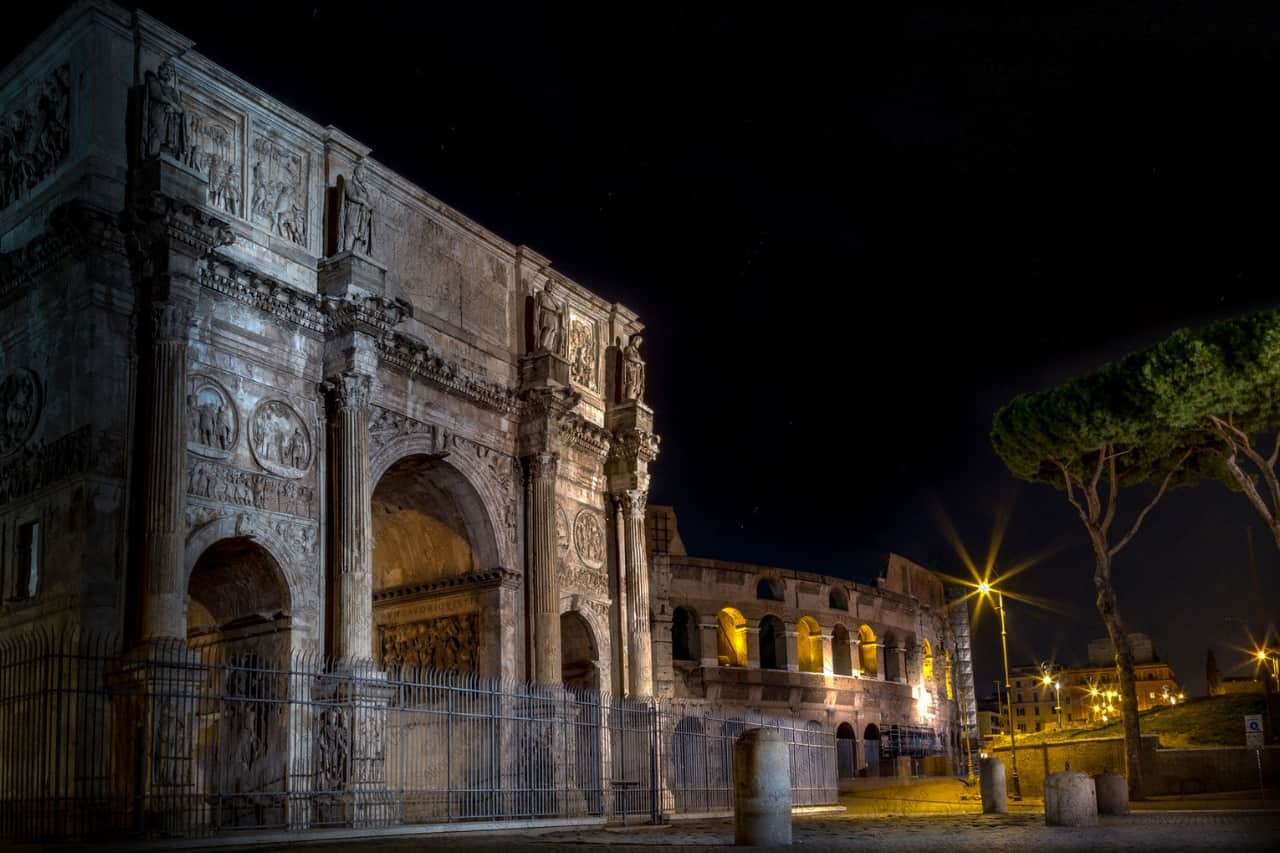
The Arch of Costantine, extremely close to the Colosseum, is one of the most refined monuments in Rome. The latter, indeed, was desired by the Emperor Costantine to honor himself and the Senatum. The architecture of the masterpiece highlights marble reliefs obtained from fossils and ancient remains (capitals, curlicues). Moreover, you can notice 3 imponent arches on the two 4-column facades rich in Corinthian details.
Travel secret: The Arch of Costantine is surely the largest of the three set in the metropolis (Arch of Titus and Arch of Settimius Severo).
11. Spanish Steps

Founded by F. De Sanctis during the 18th century, the Spanish Steps was built to connect the Pincio and Piazza di Spagna. The monument has more than 136 travertine steps finely decorated with colorful flowers (from May to July). Moreover, the latter is next to the church of Trinità dei Monti (desired by Louis XII), Via dei Condotti (the Mecca of shopping), the Barcaccia and the 12 meters Column of Immacolata.
Travel secret: Don’t miss the nearby Keats-Shelley Memorial House to learn more about the two Romantic poets.
12. Baths of Caracalla

The Baths of Caracalla (anciently named “Thermae Antoniniane”) were built during the 212 A.C. Upon your arrival, you can observe a natatio (used as a swimming pool) with a nearby series of baths (frigidarium, tepidarium and caldarium). The water flowed thanks to the Acqua Marcia branch, coming from an aqueduct from 212. The entire complex is hidden by a portico, whose arches are the only remains you can observe.
Travel secret: In the basement, you’ll observe the Mithraeum (a valid place of worship) born to honor the god Mithras.
13. Trajan’s Column
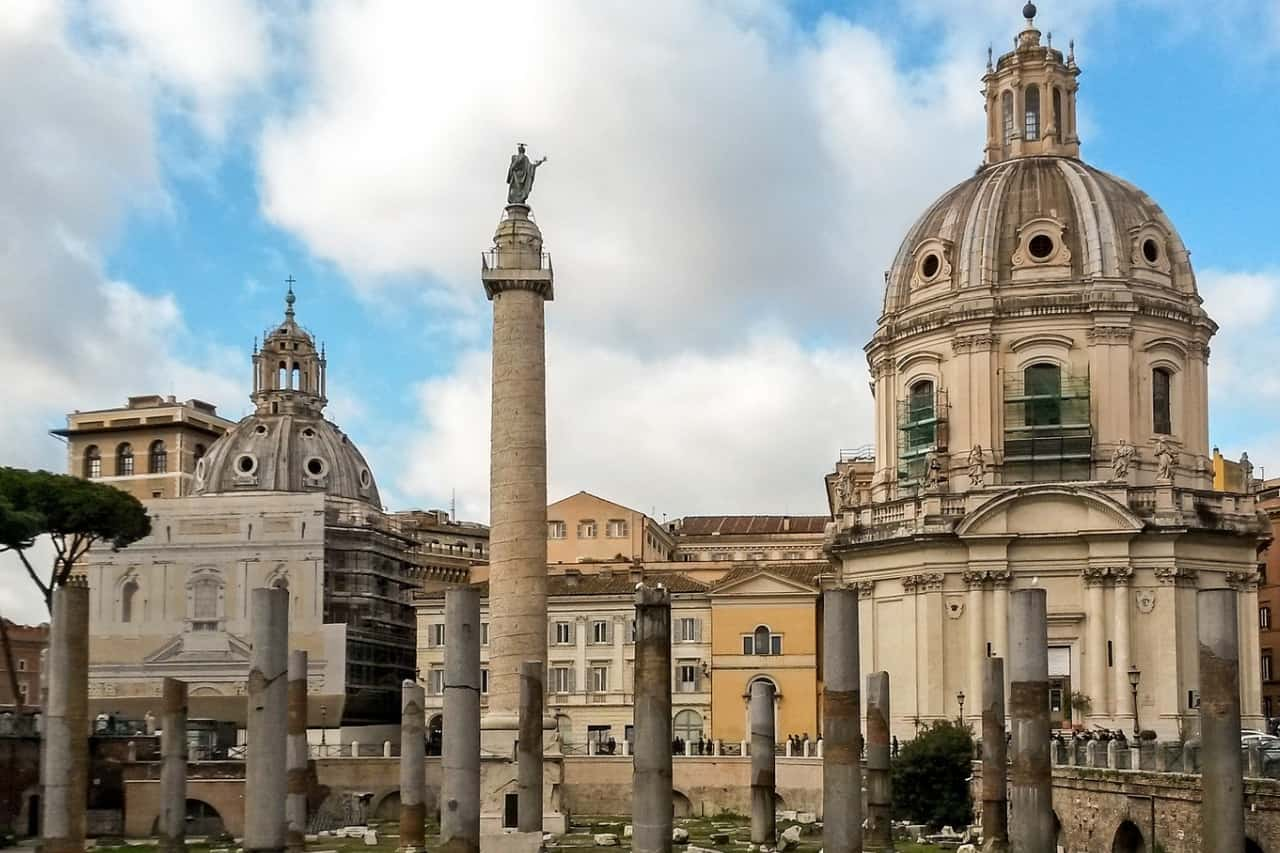
When in the Trajan’s Forum, you must stop at the Trajan’s Column. The latter, built in 113 circa, was designed by the Apollodorus of Damascus (architect). The masterpiece is an homage to Trajan’s victory in the Romanian area and has Carrara marble details with curlicues depicting this history phase.
Travel secret: You can learn more about it by booking a guided tour experience online at just 16$ (discount for kids and over 60).
14. Arch of Titus
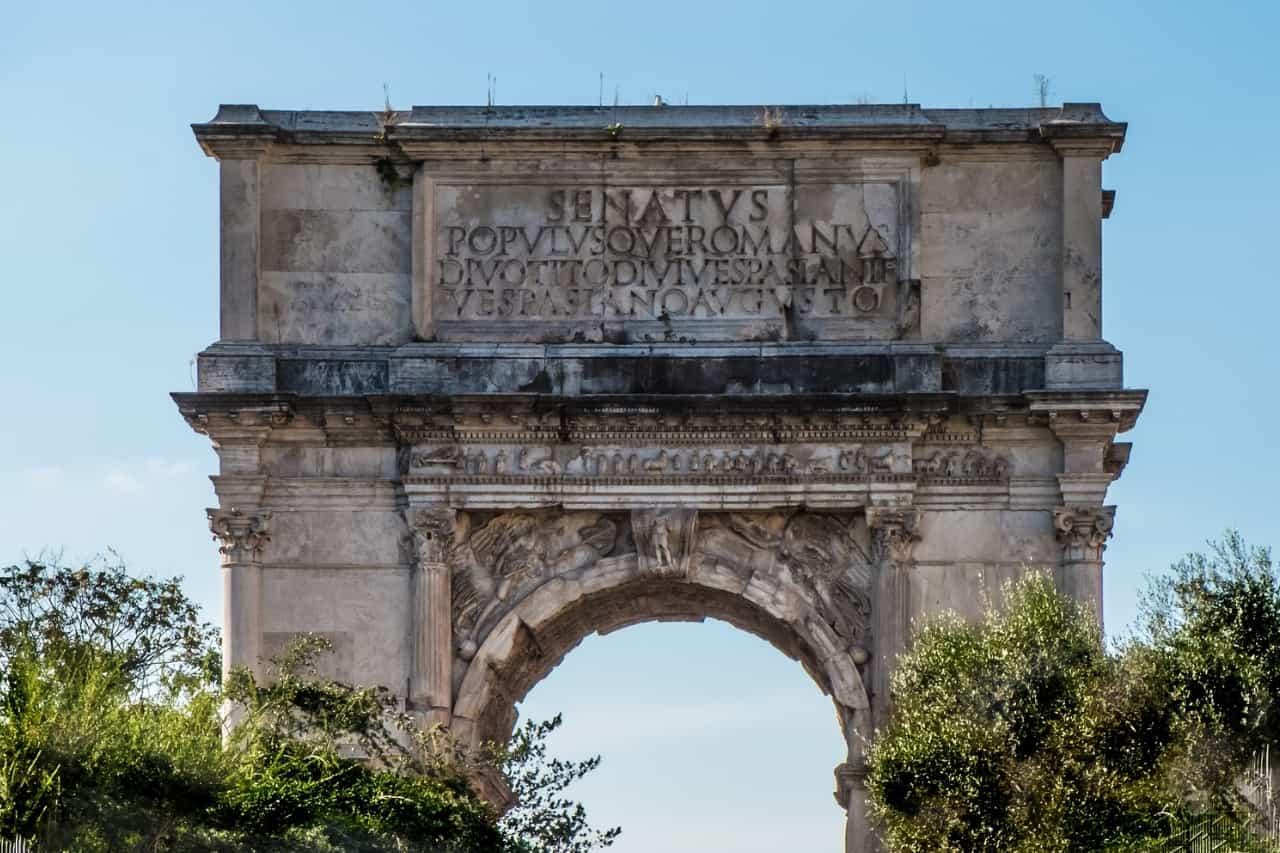
The Arch of Titus was built during the 81 A.C. Among the most beautiful monuments in Rome, it was desired by the Emperor Domitian to celebrate Titus’ courage in the Jewish-Roman War. On the external side, you can admire two winged Victories in the archivolts. Inside, observe the relief depicting the apotheosis of Titus, who ascends to Heaven on an eagle or the Roman soldiers moving the works stolen from the Temple of Jerusalem.
Travel secret: Domitian ordered this work of art to honor his brother, with whom he had a strong bond.
Read more: The Arch of Septimius Severus – An Ancient Roman Legacy
15. Mouth of Truth
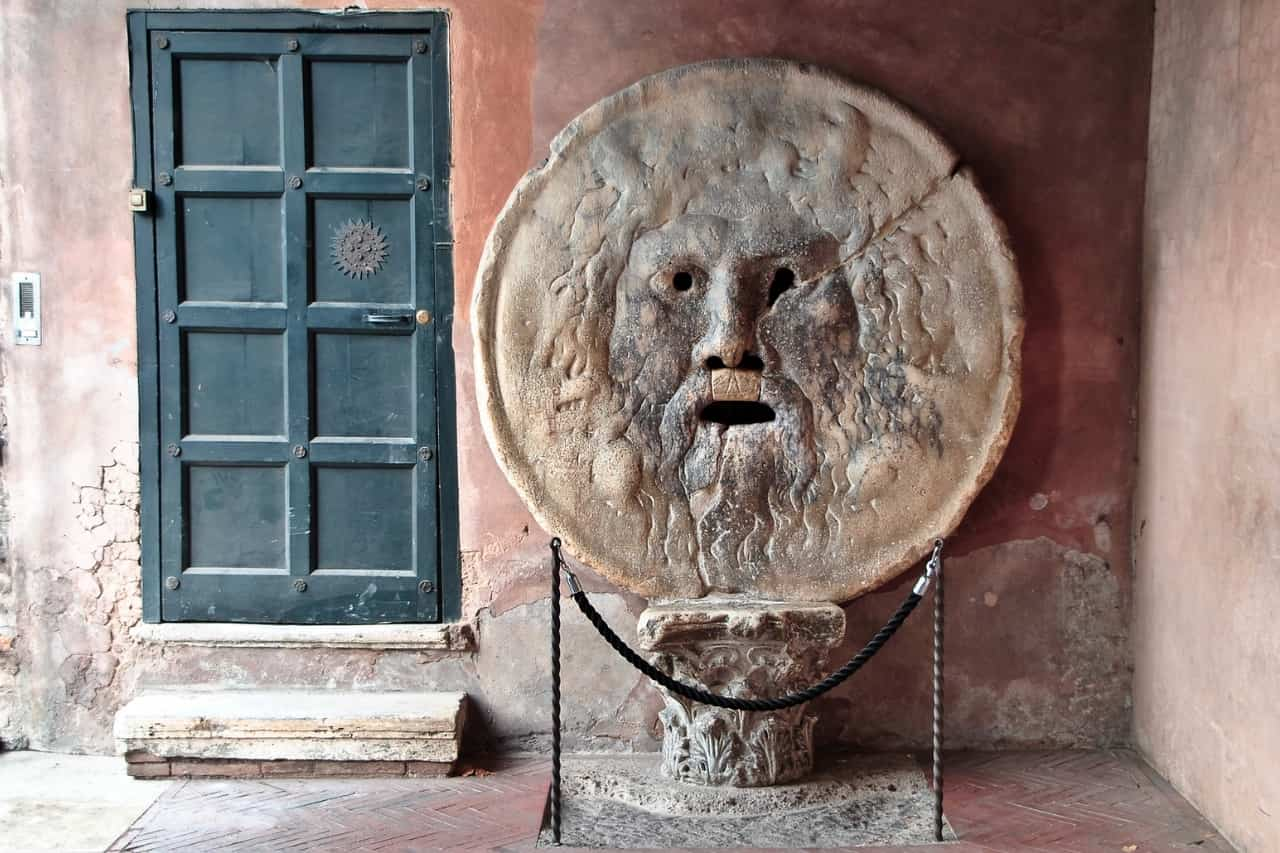
Located in Piazza della Bocca della Verità, the Mouth of Truth was built in 1632. The latter, almost 2 meters in diameter, was once used as a manhole and represents Jupiter thanks to the actual male face with a beard. The complex, indeed, was used to drain water flows (from Rione Monti up to the Tevere). Legends tell that by lying the Mouth could instantly bite people’s hands.
Travel secret: in 1953, the iconic scene of “Roman Holiday” (with A. Hepburn) was filmed here.
16. Palatine Hill
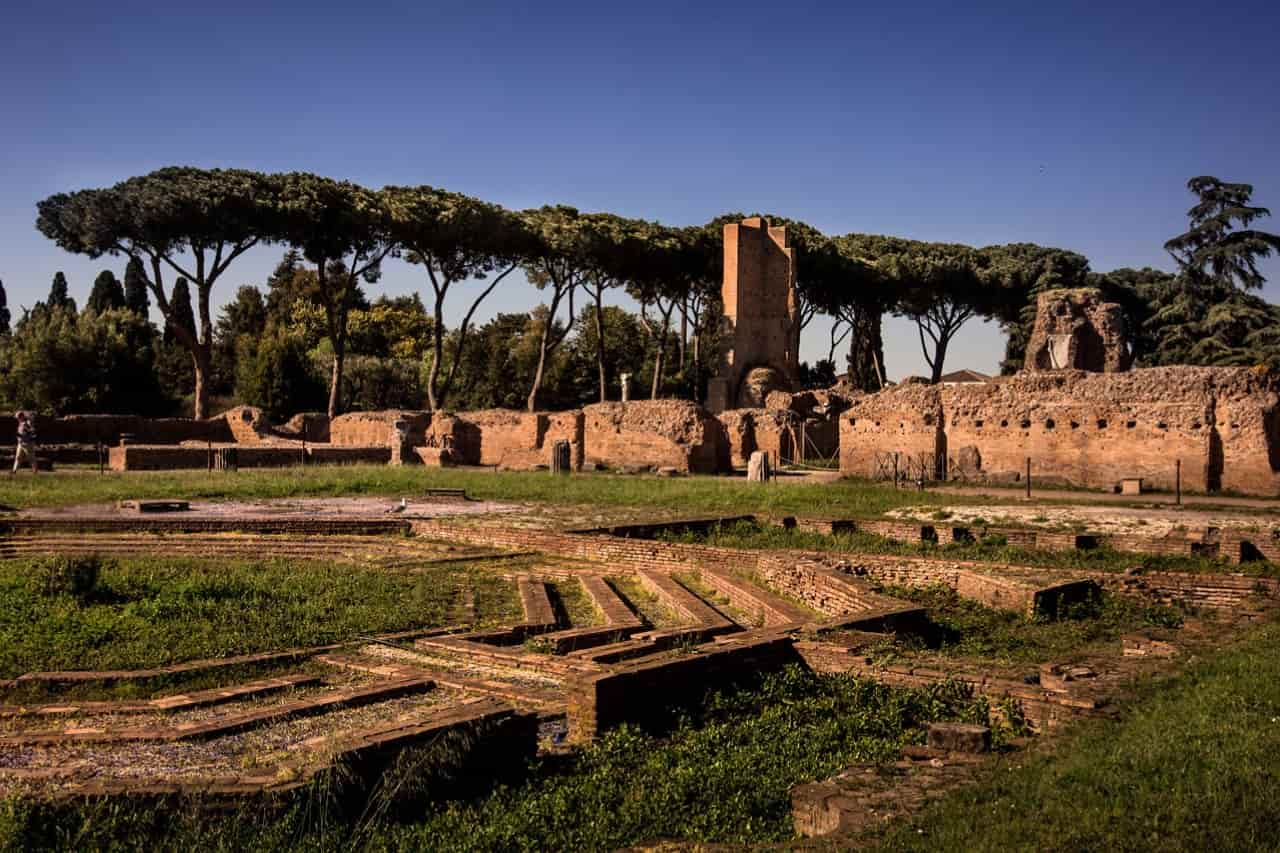
The Palatine Hill, near the Roman Forum, is a naturalistic site rich in rests of the Iron Age. Moreover, the latter was the neighborhood of the Roman aristocrats and home to the cult of Cybele. Here, you can admire remains of the following masterful building: the Domus Aurea, the Domus Flavia and the Domus Augustea.
Travel secret: The imperial palaces are linked to each other thanks to underground corridors enriched with different kinds of decorations.
17. Circus Maximus
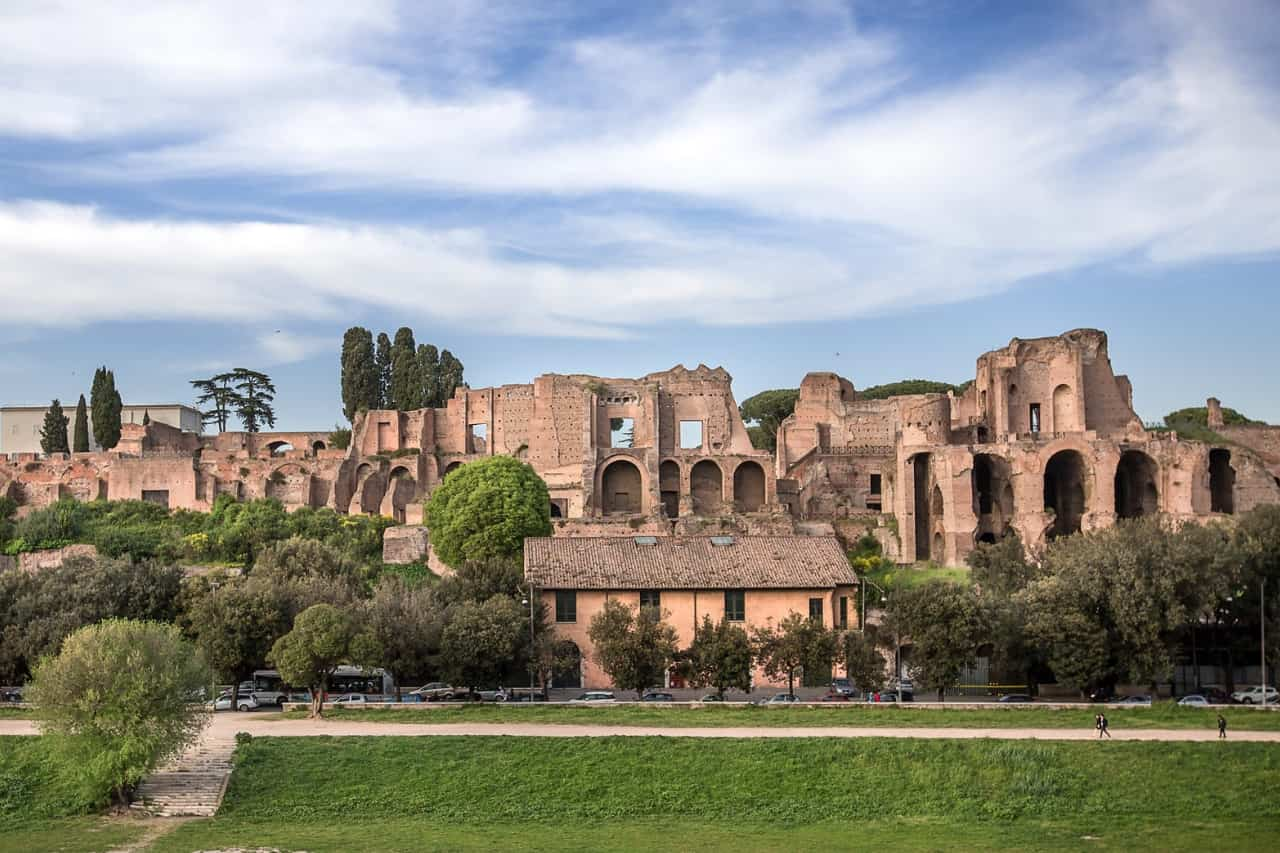
The Circus Maximus (circular in shape) was initially used for horse racing thanks to the muddy and wet area. Due to a huge fire, the Emperor Augustus ordered a restoration introducing: the Obelisk of Pharaoh Ramses II, three floors (dedicated respectively to senators, knights and civilians) and the Triumphalis Door (a massive arch).
Travel secret: Nowadays, the site hosts lots of concerts (national and not) thanks to its capacity.
Read more: What is Rome Famous For – 28 Things that Make Rome Unique
18. Ara Pacis
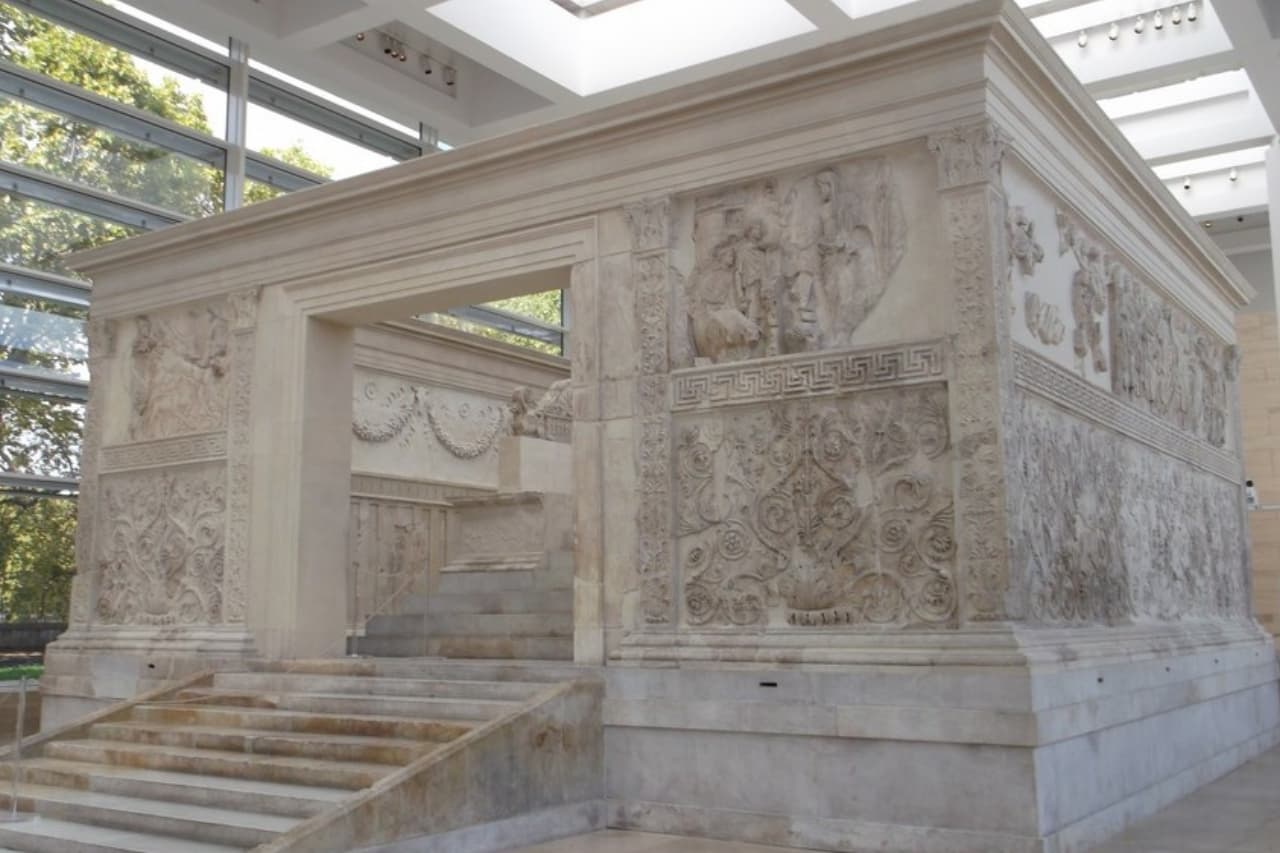
The Ara Pacis, based in the heart of Campo Marzio (in northern Rome), is a monument built during the 9 B.C as a tribute to the Augustan Age rich in conquests, victories and peace. It is made of marble and has multiple reliefs linked to the foundation of the metropolis such as: Romulus and Remus with the she-wolf, Augustus and his family next to priests and senators with laurel wreaths. The full ticket price costs 14.50$ circa.
Travel secret: R. Meier (architect) covered the place with a minimal structure, in order to save it from any kind of pollution.
Egyptian Monuments in Rome
When in Rome, you’ll firmly be astonished by the beauty of numerous Egyptian monuments moved from their birth town by the Emperors of the time. Here’s what you can’t miss:
19. Obelisk of Montecitorio

The Obelisk of Montecitorio (or“Solare”), based in the homonym square, was built in the heart of Eliopoli in 525 B.C. The monument, in red granite, presented a registration dedicated to the Emperor Augustus and a mosaic depicting a sundial and the astrological signs. Following a strong earthquake, only a few doodles remain, symbolizing the ancient astronomical function of the site.
20. Vatican Obelisk
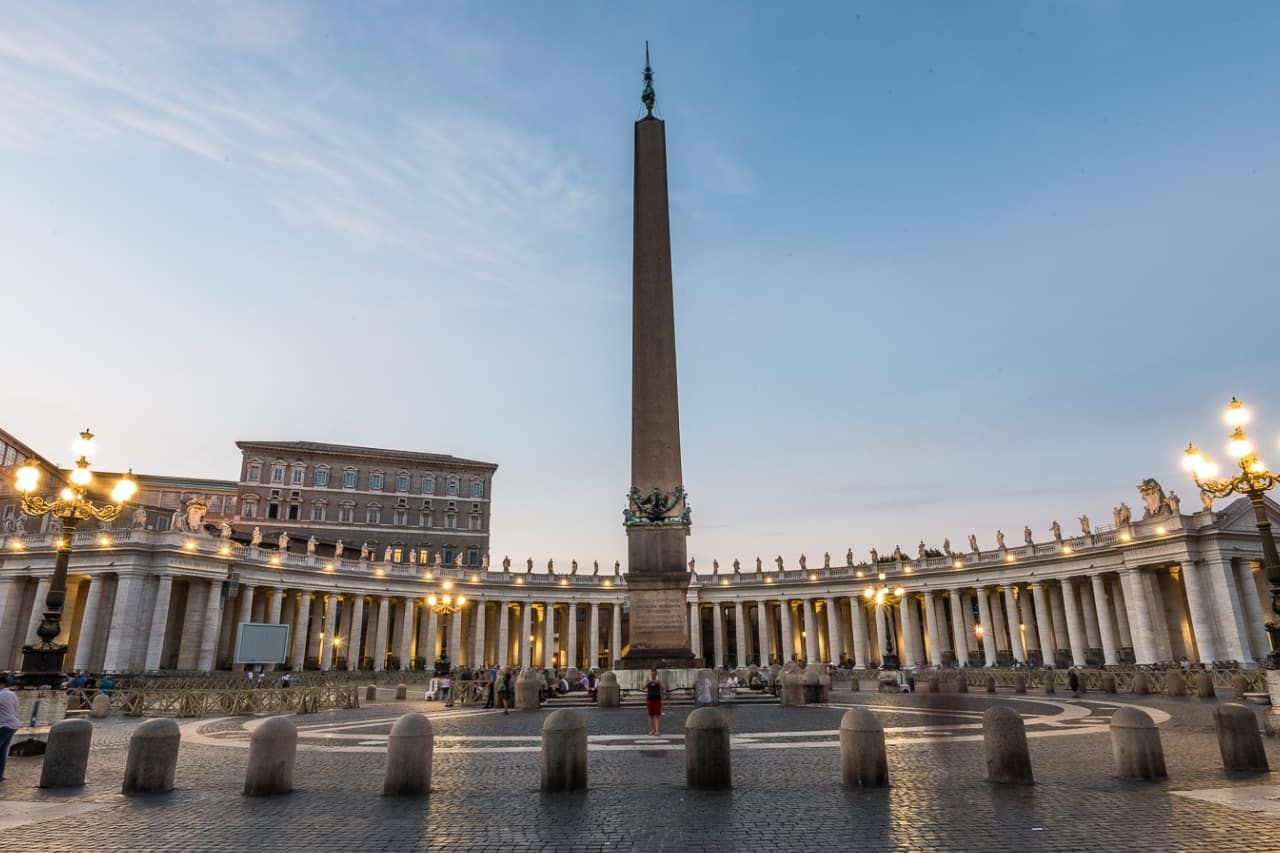
The Vatican Obelisk, 25 meters tall, was built in Egypt but Caligola ordered its move to Rome in 37 A.C. When you arrive, take a look at the Pope Sixtus V’s sign depicting 4 huge lions or the high cross with the heraldic symbols of the pontiff.
21. Flaminio Obelisk
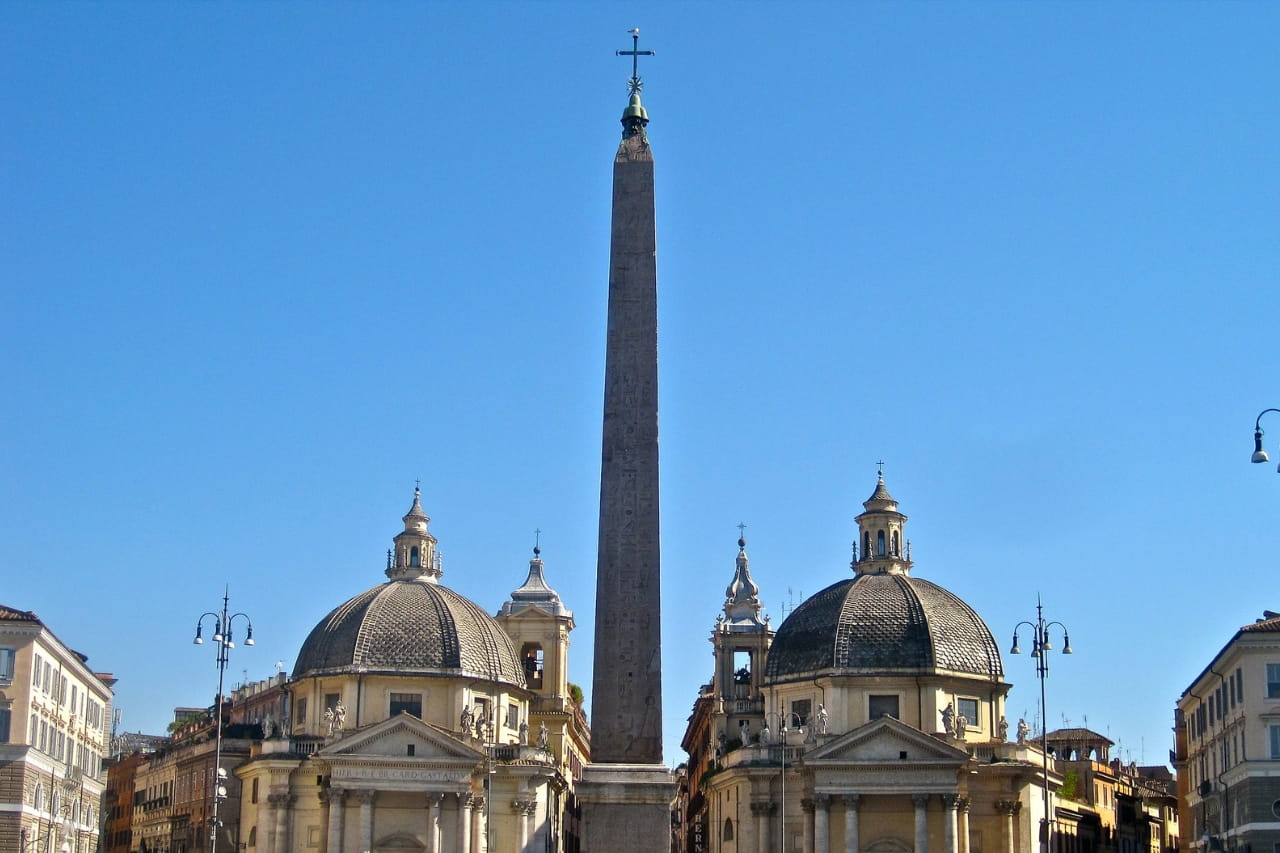
The Flaminio Obelisk, based in Piazza del Popolo, was built during the 1300 B.C. It is one of the first monuments in Rome moved from Egypt and is made of red granite. Once here, enjoy its side rich in hieroglyphics commissioned by Pharaoh Ramses II and his father Seti I.
22. Lateran Obelisk

The Lateran Obelisk was designed by Faraone Tuthmosis II to honor his father but was inaugurated in Rome in 1588. The monument is rich in registration (on the upper part) and a portrait depicting the Faraon making offerings to the gods. Known as a symbol of the supremacy of christianity over paganism, the latter was restored by D. Fontanam who added a marble base and a cross decorated with symbols linked to the noble Peretti Family.
Frequently Asked Questions
Have you satisfied your curiosities about the monuments in Rome? If not, here are some answers to the most asked questions.
What is a Famous Monument Found in Rome?
A famous monument found in Rome is surely the Sistine Chapel. This is because it is the Mecca of Roman Art, as it includes masterpieces made by major artists of the Renaissance, from Raffaello to Michelangelo. A mix of styles used to celebrate God and the catholic religion.
What is the Most Historic Place in Rome?
The most historic place in Rome is the Colosseum. The latter, inaugurated during the Vespasian Era, represented the symbol of Ancient Rome rich in conquers and power. Indeed, it was mainly used for shows, gladiator fights and executions of guilty people. However, a part of its marble was used to build other iconic places in town such as: Palazzo Barberini and the Basilica of S. Peter.
Why does Rome Have so many Monuments?
Rome has so many monuments and counts more than 2500 years of history. This is because it was the center of the Roman Empire who exploited the town’s strategic position to meet new people and Emperors who left symbols of their power through art (from the Roman Forum to the Vatican). Moreover, the city was chosen by God to be the heart of the Catholic religion and this explains the multiple basilicas or churches there.


